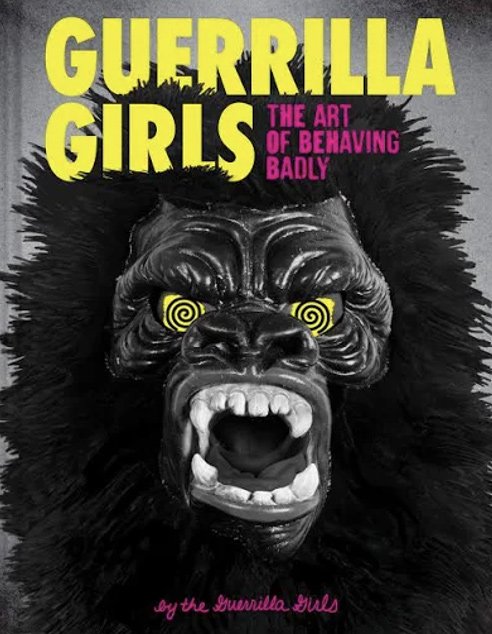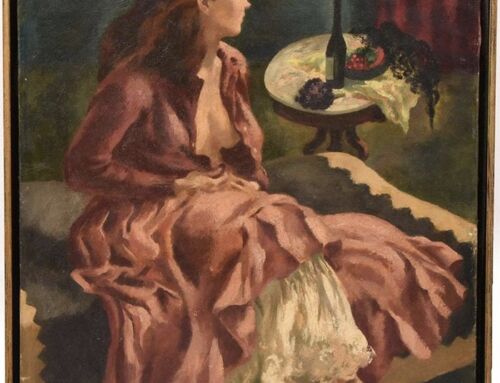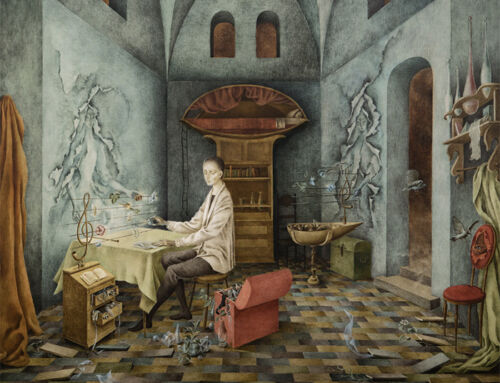
Guerilla Girls: The Art of Behaving Badly
Review by Micheline Klagsbrun
In 1985, a group of women artists tested out a bold new strategy for protesting inequity in the art world. Wearing gorilla costumes and masks, they wheat-pasted downtown Manhattan with dramatic posters summarizing the statistics on the current exhibition at the Museum of Modern Art. “An International Survey of Painting and Sculpture”, purporting to be a global up-to-the-minute overview of the most significant art of the time, featured 148 male artists, 13 female, and zero artists of color – facts revealed by the Guerilla Girls’ posters.
Guerilla Girls: The Art of Behaving Badly celebrates the 35th anniversary of this event by cataloguing the collective’s vivid career from 1985 until today, including the posters and billboards of their street-art campaigns, their use of performance and media and their exhibitions. Its format echoes the work, in that it is mainly a visual retrospective, filled with powerful images. The minimal text directly describes the images and their context without providing analysis. This reliance on images also relates to the underlying purpose of the book: it is not only a retrospective but a call to arms, hoping to inspire its readers to continue the fight. Indeed, the images are exciting and the story they tell is a stirring and often infuriating one.
The chronological progression allows us to identify with the small-scale informal origins of the group, and to follow its development. The 1985 project arose from the women’s frustration that their first protest method, marching in a large crowd waving placards, seemed to have no effect. When they decided to mask up and make trouble, with their revelatory statistics and daring graphics, they were immediately noticed, and gained a huge following among all who appreciated their feminist message and fight for justice.
Their earlier posters mostly consisted of facts conveyed by a punchy design, naming and shaming galleries, museums, art critics and the New York Times for systematically ignoring women artists and artists of color. In 1986, they created a parody of a school report card that publicized the failure of 17 New York City gallerists to increase their representation of women artists. Remarks included “No improvement”, “Not paying attention”, “Boy crazy” and “Working below capacity”. Probably their most famous poster came out in 1989, featuring a naked reclining women seen from behind, wearing a gorilla mask, with the caption “Do women have to be naked to get into the Met Museum?”. The subtitle explains “Less than 5% of the artists in the modern art section are women, but 85% of the nudes are female”.

By the 1990’s, the group had expanded their tactics to include letter-writing campaigns, advertisements in magazines and on buses, speaking tours and various actions. They published Hot Flashes (1993-4), a satirical journal that listed, among other articles, “Top Ten Signs that you are being Tokenized” (for example, “At openings and parties the only other people of color are serving drinks”.) Their books, selections from which are reproduced here, include “The Hysterical Herstory of Hysteria and How It Was Cured: From Ancient Times Until Now” (2016), “Bitches, Bimbos and Ballbreakers: The Guerilla Girls’ Illustrated Guide to Female Stereotypes” (2003) and “The Guerilla Girls’ Art Museum Activity Book” that looks like a children’s book but was written “to teach adults how to criticize museums”.
Not only have the group’s tactics expanded, but so have their areas of concern, from sexism and racism in Hollywood to discrimination and corruption everywhere. This book documents their attacks on censorship during the culture wars over Robert Mapplethorpe’s photography, a collaboration with a women’s shelter to highlight the problems of shelter residents, anti-war and pro-choice campaigns. Their reach is truly international with shows having reached Ireland, Poland, Spain (Bilbao), Hong Kong, Ecuador and New Zealand.
Most recently, the group has focused on the dark side of museums and the influence of wealth in the art world. “Guerilla Girls’ Code of Ethics for Art Museums” (1990), designed to appear engraved on stone tablets like the Ten Commandments, is still keenly relevant today, when many other artist-activist groups, like Decolonize This Place, the Feminist Art Coalition and Nan Goldin’s PAIN (Prescription Addiction Intervention Now), have joined the group in attacking museum trustees like the Sackler family.
Alongside its chronicle of projects, however, this book also presents a less rosy picture of measurable impact. Updates of some of the earliest posters show that change, while positive, still has a long way to go. In 2015, the group produced a “recount” of their 1985 project: “How Many Women Had Solo Shows At NYC Museums?” In 1985, the score was: Guggenheim, Met and Whitney 0, Modern 1; in 2015, Guggenheim, Met and Whitney 1, Modern 2.

Rather than being discouraged by the slow rate of progress, the collective aims to grow the movement by using this book to enlist more “guerillas”. The book contains a gorilla mask for the reader to pull out and use. The play of ‘gorilla’ and ‘guerilla’ is brilliant. Masking allows the deliberate hiding of identity and gender that gives the group collective power and immunity from individual persecution. Anonymity both protects these underground fighters and highlights the message that women are generally ignored and invisible in the art world. It allows them to spread fear among their targets by implying that the “guerillas” are everywhere and anywhere, surveilling and scrutinizing the art world and beyond. Over 100 women have joined the collective so far, and this book, under the guise of a coffee-table art book, aims to recruit more to “Fight discrimination with facts, humor and fake fur”.
Published October 6, 2020, by Chronicle Books, San Francisco, CA.












